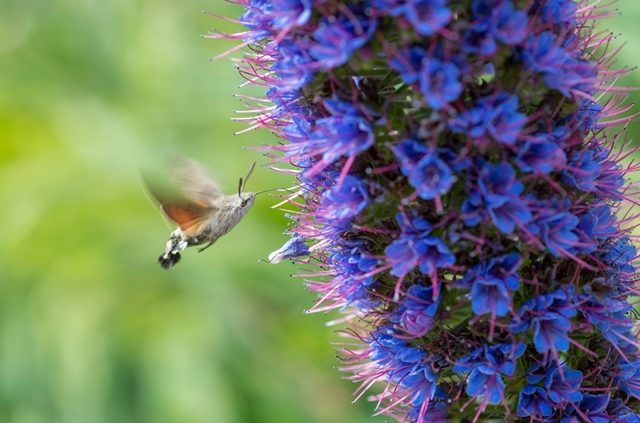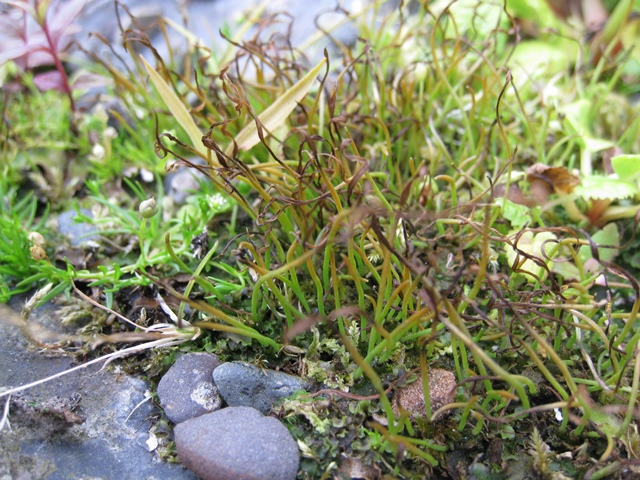Well alright not real hummingbirds. The closest thing we have in Britain is the equally spectacular humming-bird hawk-moth. This extraordinary day-flying moth put in an appearance in the middle of the recent BioBlitz at Logan and confirmed the moths as a real highlight of the event.
A BioBlitz aims to record as many species in a defined area in a defined period of time (normally 24 hours). The Logan BioBlitz was the second such event in a series of four to cover Edinburgh Botanics and all of the regional gardens. Apart from being great fun and engaging visitors with biological recording the Bioblitz events help garden managers to be aware of the native plants and animals making a home among the ornamental and scientific collections under their care.
A good example of a new discovery that came out of the Logan BioBlitz was the generally diverse flora of bryophytes (a group of smaller plants that include mosses, liverworts and hornworts) that was found to be living in the Garden. A species list of 108 including six species new to the vice-county of Wigtownshire is really pretty impressive and something that should be preserved by sensitive garden management. Among the records new for the area were three species of hornwort, a mainly tropical group of plants allied to the mosses. As Logan is one of the most exotic gardens in Britain, thanks to the warming influence of the Gulf Stream, it is very appropriate that these plants should grow at Logan. The species were identified by Liz Kungu and are Anthoceros punctatus, Anthoceros agrestis and Phaeoceros laevis (illustrated below).
The total count of species for the BioBlitz is in excess of 360. The precise number remains unclear until all of the moth species have been identified. A summary of the findings is provided below:
Logan BioBlitz species counts
__4 Algae
__3 Amphibians
_36 Birds
108 Bryophytes (mosses, liverworts and hornworts)
__1 Fish
_26 Fungi (including lichens)
_29 Insects
__3 Invertebrates (miscellaneous groups)
_60+ Butterflies and moths
__3 Mammals
_81 Vascular plants (including ferns)



1 Comment
1 Pingback